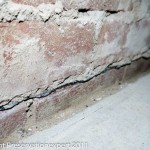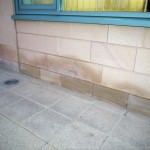Damp-proofing, timber treatment and waterproofing specialists are ten a penny – Google or Yell will find you lots of them when you need one. However, like all trades there are good ones and bad, ignorant and clever, honest and not – how do you stack the odds in your favour? The thing is, that damp […]
Six things to check and do before you choose a damp-proofing specialist.
Damp diagnosis training to another level

last week I spent the day in Graham Coleman’s lab, down in Dorset. Graham kindly invited me down there for an intensive day of tuition on a one to one basis. I’ve attended many presentations and training courses with Graham, usually at the Property Care Association’s HQ and I jumped at the chance to […]
Rising damp in Yorkshire’s post war housing is often caused by construction defects and… rationing!

Quite a statement and one I may get taken up on. However, I find that in the majority of cases, where these relatively new houses have rising damp, there’s nothing wrong with the original DPC. In saying that I do sometimes recommend installation of a new one, depending on the circumstance. Here’s why. Bridging built […]
Rising Damp – the inevitable rise of moisture through masonry.

Our houses are built from stone or brick, usually bonded in cement or lime mortar. These materials soak up water, whether from the exposed surface when it rains or from the ground, after all, they are embedded in the soil. Rain is sporadic and interspersed with sunshine and wind, so the effects of rainwater penetration […]
Damp Diagnosis case study; a bridged DPC in a cavity wall
Having recently posted Graham Coleman’s moisture profile table on Preservationexpert, I thought I’d keep an eye out for some on-site case studies for you, which demonstrate some finer points to take account of on damp surveys. This one is a classic rising damp profile I found the other day, using a conductivity moisture meter, […]
